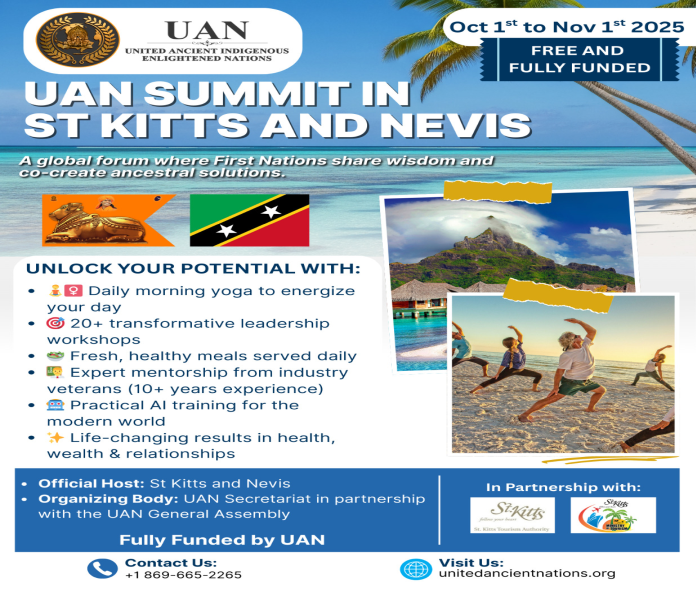By Johnny Coomansingh
In 1921, Grande Riviere, a coastal village on the north coast of Trinidad staggered to survive under the pressure of soft cocoa prices on the world market. Grande Riviere was once a dominant cocoa-producing area. Without the money garnered from the cocoa industry, Grande Riviere fell by the economic ‘wayside.’ The culture gradually changed to the survival of the fittest mode. Monoculture has its dangers.
Since the economic downturn, the village sought to sustain itself through subsistence farming and a little fishing. Most of the villagers resorted to ‘hunter-gatherer’ exploits. This included the poaching and slaughter of the leatherback turtle (Demochelys coriacea) and their eggs for food. This resulted in a serious reduction in the number of turtles coming to nest on the Grande Riviere beach.
In 1970, the leatherback sea turtle among others, was listed as endangered under the Endangered Species Conservation Act. Slaughtered for their eggs, meat, skin, and shells, most species of sea turtles suffer from poaching and over-exploitation. Nevertheless, in 1990, the tourism industry slowly began to take hold in the village.
With a tiny population of just 334 people, Grande Riviere made a valiant effort to save the leatherback turtle with a view of luring tourists to the area. With increased environmental awareness at the local, national, regional, and international levels, the leatherback turtle in Grande Riviere made a wonderful and exciting comeback with hundreds of turtles returning to lay their eggs every night during the turtle watching season, March 01 to August 31.
Today, the villagers and other supporting governmental and non-governmental agencies have declared the non-consumption of the meat of the leatherback turtle and the Grande Riviere Beach as a protected area. This might be the order of the day but some people still poach the leatherback and other turtles from time to time.
With turtles coming back to nest, the tourism industry slowly began to take hold of the village. With increased environmental awareness and cooperation at the local, national, regional and international levels, the leatherback turtle in Grande Riviere has made a wonderful comeback with hundreds of turtles returning to lay their eggs every night during the period March to August on the Grande Riviere Beach.
But nature has a way of doing things in Grande Riviere that sometimes does not bode well for the turtles. Feral dogs are sometimes seen digging up nests to get to the eggs. During the day, when hatchlings are scurrying down to the sea they are scooped up by frigate birds and gobbled up by vultures commonly referred to as corbeau (Carthartes aura). These vultures that peruse this beach know exactly when to arrive.
In recent years, hundreds of turtles came up to lay on this short stretch of beach. With limited space, there were so many turtles that came up to lay that many incubating nests were dug up and destroyed. And then the river, from which the village derived its name, seems to ‘own’ the beach. There are times when the river will come rushing down the beach destroying everything in its path, including nests filled with eggs.
Many jobs in Grande Riviere now depend on the presence of the leatherback turtle. There is no doubt that community engagement involved in saving the leatherback turtle created a scenario for increased employment in the village.
However, the Grande Riviere Nature Tour Guide Association (GRTGA) is the primary mover in the work of saving the turtles. The Grande Riviere Village Council supports the effort, but it is the younger members who are mostly active in tour guiding when tourists come to see the turtles.
Some of the local tour guides still have problems with the ability to pronounce certain words, phrases, syntax, and transference of scientific knowledge. Management of the beach between 6:00 pm and 6:00 am poses another problem. Many of the workers who do this ‘job’ are volunteers. The village of Grande Riviere would have suffocated economically if steps were not taken to engage the community in saving itself. The leatherback turtle is at the center of the economy of Grande Riviere. But all is not well.
My visit to Grande Riviere in August 2019 revealed that all the hotels were vacant. The hotel business was not booming as in former years. The turtles have not been showing up since July 2019. Without turtles on the beach at night, there is, literally, an avalanche of non-occupancy. And we all know that the most perishable of all assets is an unsold room.
The tourism sector in Grande Riviere was struggling at the moment. That was in August 2019. Empty hotel parking lots were noticeable. For all wants and purposes, the village looked ‘dead.’ The doors were shut tight at the Visitor Orientation Center. The lack of tourists and the associated stress in making a living could have been the reason why one craftsperson yelled at me to not take any pictures of the structure where she and her children resided. She squats in a makeshift structure built around a huge almond tree on the beach at the end of Hosang Street. How she was allowed to occupy that location on the beach is still a big question.
Apparently she was very angry that I did not choose buy a piece of handicraft from her. She even threatened to destroy my camera if I dared take a photograph. Seeing her demeanor, and sensing her hostility, I calmly walked away. One hotelier informed that some of the Afro-Trinidadian villagers of Grande Riviere are prejudiced. They do not like or prefer people of Indo-Trinidadian extract. The age-old suspicions of the villagers of Grande Riviere are alive and well. To me, it was a bit unsettling to learn this “fact” since almost 40 percent of the population of Trinidad consists of people of South Asian extract.
I was informed that despite the loss of room sales and the apparent downturn in the economy of the village, Grande Riviere will ‘survive’ because an illegal and ‘underground economy’ is thriving in the village. To describe this economy, and to say exactly what it involves, requires deeper and more risky research.
Due to socio-economic upheavals and political unrest in neighbouring Venezuela, which is just seven miles away across the Gulf of Paria, Trinidad has had a huge influx of Venezuelans. The migration started about five years ago. There are claims that over 40,000 Venezuelans now reside in Trinidad. In some way or other, the migration of these people have affected every sector of Trinidad, Grande Riviere included.
But a big question remained. For that year (2019), why did the turtles stop coming to nest so early in the season? The reasons for this require serious biological, coastal, geological, and climatological research. Could it be that climate change is interfering with the turtles in terms of food sources, water temperatures, and beach sand temperatures?
Deeper studies into the plight of the leatherback turtle must be entertained for satisfying answers to the questions asked. And perchance the turtles fail to return in the droves recorded, what effect will such a situation have on the village of Grande Riviere? What other strategy will the community have to implement to augment and/or sustain the economy of Grande Riviere? Nevertheless, there is a ray of hope on the horizon that cocoa production is hopefully making a comeback; but to what extent?
According to Leon Granger, the former chief executive officer of the Cocoa Development Corporation of Trinidad and Tobago Limited (CDCTTL), the International Cocoa Organization (ICCO) gave Trinidad and Tobago the status of world recognition for its quality of cocoa. Trinidad has a100 percent fine/flavour for its cocoa beans. He further added that when we travel to cocoa conferences worldwide, we are ‘worshipped’ as the country that has given the world the Trinitario variety of cocoa; born and bred right here in Trinidad.
Granger informed that the cocoa farmers of Trinidad and Tobago have been grouped into 18 clusters. Grande Riviere is one of the clusters. Leroy Peters, a Grande Riviere cocoa farmer and one of the winners in the International Cocoa Awards (ICA), is the head of the Grande Riviere cluster. This farmer has future plans to increase cocoa production through cocoa rehabilitation, but more importantly to generate value-added activities such as the making of quality chocolate.
The Trinidad Guardian newspaper reported: “Their chocolate was described by the judges at the ICA as having “very fruity flavors, like orange and a bit of lemon, also some exotic fruits such as mango, that bonds all the qualities of cocoa along with little acidity…We are connecting Trinidad and Tobago cocoa producers to international artisan chocolatiers, niche chocolate makers and cocoa buyers, thus strengthening our linkages to global markets, and empowering the cocoa farmers of Trinidad and Tobago.”
Whether the cocoa industry that once prospered in Grande Riviere will rise to take the village out of its economic morass is yet to be seen. The people residents in the village of Grande Riviere can only hope.





